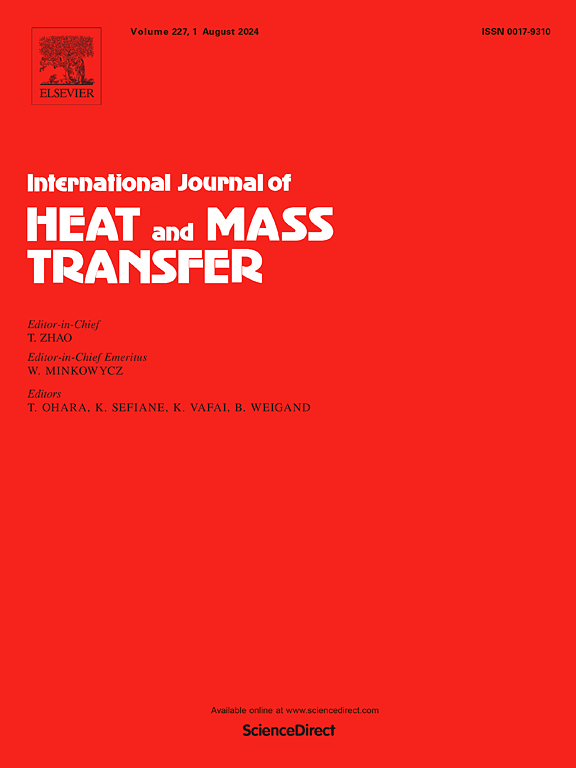Experimental study on the relationship between the flow pattern and heat transfer characteristics of flow boiling in a vertical upward rectangular narrow channel
IF 5
2区 工程技术
Q1 ENGINEERING, MECHANICAL
International Journal of Heat and Mass Transfer
Pub Date : 2025-02-20
DOI:10.1016/j.ijheatmasstransfer.2025.126844
引用次数: 0
Abstract
This study investigated the evolution of flow patterns and heat transfer characteristics of flow boiling within vertical upward rectangular narrow channels. The channel, visualized and heated to simulate compact heat exchangers and the fuel channels of small modular reactors (SMRs), has geometric dimensions of 720 mm × 240 mm × 2.75 mm (l × w × s) and employs deionized water as the working fluid. Experimental conditions include inlet temperature in the range of 50 - 90 °C, mass flux between 4.04–24.24 kg/(m²·s), and heat flux between 3.32–64.12 kW/m². Images acquired via high-speed camera are presented to elucidate the flow regime physics. Different types of flow pattern maps were drawn and compared with other researchers’ data under adiabatic and steam heating conditions. A new type of dimensionless correlative flow pattern transition criterion for vertical rectangular narrow channels was obtained and showed good accuracy in predicting the critical vapor quality of flow pattern transition. The results indicated that thermo-hydraulic parameters influence the positions and length of flow patterns, and the overall trend of the local heat transfer coefficient (HTC) remains consistent during flow pattern transition. Peak HTC values occurred during the later processes of restricted bubbly flow and annular flow. Critical heat flux (CHF) exhibited a positive correlation with mass flux but showed minimal sensitivity to inlet temperature. Specially, due to the intermittent wetting behavior of the tidal flow, heat transfer deterioration demonstrated a delayed response, and the heat flux of optimal average HTC was higher than the CHF.

求助全文
约1分钟内获得全文
求助全文
来源期刊
CiteScore
10.30
自引率
13.50%
发文量
1319
审稿时长
41 days
期刊介绍:
International Journal of Heat and Mass Transfer is the vehicle for the exchange of basic ideas in heat and mass transfer between research workers and engineers throughout the world. It focuses on both analytical and experimental research, with an emphasis on contributions which increase the basic understanding of transfer processes and their application to engineering problems.
Topics include:
-New methods of measuring and/or correlating transport-property data
-Energy engineering
-Environmental applications of heat and/or mass transfer

 求助内容:
求助内容: 应助结果提醒方式:
应助结果提醒方式:


